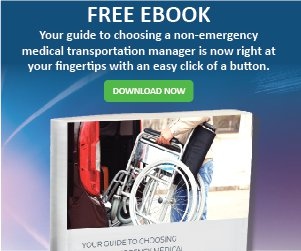When the founders of Uber were sitting around San Francisco dreaming big about Uber, they weren’t dreaming about developing a new kind of transportation manager. They were thinking about how to develop a technology app that would pair drivers with consumers in a much better way than traditional taxi cabs ever imagined. They quickly gained proof of concept. They won success after success in new markets. And then the business of providing transportation set in and set in hard.
 In 2013, an Uber driver struck a child who subsequently passed away and the insurance Uber carried didn’t cover the accident. Wrongful death lawsuits ensued. Then in 2014, a widely publicized assault by an Uber driver occurred in India that resulted in an awaking of international attention. With each of these incidents, Uber led with the fact that they were just a technology company and skirted initial responsibility. Uber’s operations were ceased in India, Thailand, Spain and France. Then Uber received complaints in both Chicago and London of assaults by their drivers. Uber started looking at its business in a different way.
In 2013, an Uber driver struck a child who subsequently passed away and the insurance Uber carried didn’t cover the accident. Wrongful death lawsuits ensued. Then in 2014, a widely publicized assault by an Uber driver occurred in India that resulted in an awaking of international attention. With each of these incidents, Uber led with the fact that they were just a technology company and skirted initial responsibility. Uber’s operations were ceased in India, Thailand, Spain and France. Then Uber received complaints in both Chicago and London of assaults by their drivers. Uber started looking at its business in a different way.
The Role of Regulating to Keep People Safe
If you’re a transportation provider, safety is the forefront of your company culture and if it’s not then the state makes sure it is by setting pretty hefty regulations in place that mandate that culture or you won’t be operating long. Just like LogistiCare and other non-emergency medical transportation managers, Uber has built a network of transportation providers. Brick and mortar transportation providers and managers know that you have to live and breathe safety and regulation first. Uber is facing that hurdle now.
San Francisco District Attorney George Gascón and Los Angeles County District Attorney Jackie Lacey jointly announced actions against Uber in late 2014. The technology makes the service appear safer to consumers than maybe it really is.
"Unfortunately, Uber… has refused to comply with reasonable regulations as required by California law," Lacey said in USA Today. “As a result, Uber continues to put consumers at risk by misleading the public about the background checks of its drivers and its unwillingness to ensure that correct fares are charged."
The Chicago Sun Times reported that tighter safeguards were issued just this February after politicians demanded regulation be put in place to keep Chicagoans using Uber safe. San Francisco and Chicago are not the only cities that are coming down on Uber and it’s not just governments that have issue.
Who has had the biggest problem with Uber? There’s no question that it’s the taxi companies. Uber entered the space without having to pay the expense for the safety checks and regulation for which they are upheld. All that is about to change, city by city.
Forcing like industries to evolve… not just taxis
Uber recently hired a new Global Safety leader who built a first-of-its-kind safety program at Airbnb and before that served in the U.S. military to put out the fires. In a December blog post, he highlights new initiatives that include building upon their ShareMyETA tool, new biometric tools to screen drivers, and a 24/7 emergency support group that is trained by RAINN, a national rape prevention organization. It’s this leading innovation that made them a revolutionary in transportation in the first place. However, they have a long road ahead. Every state and countries’ regulation requirements are going to be different. Available data on drivers varies state to state, country to country. The safety requirements they need to set in place globally is going to be no easy feat operationally.
On the flip side, Uber has set a bar on customer service and features via their app that has turned the transportation industry upside down. If Uber can do it, why can’t taxi companies do it? Why can’t an app tell me when my taxi cab is going to arrive and who the driver is going to be? Why can’t an airline pinpoint my loved one’s exact location and estimated arrival via an app on my phone while in the air?
LogistiCare is already seeing evidence of similar demands in state Medicaid RFPs for enhanced GPS on our vehicles within the NEMT industry. Uber didn’t just revolutionize the taxi industry; it set new standards across all of transportation for greater technology investment and ease of use. LogistiCare is embracing that challenge now on multiple levels.
Whether it was their original intention or not, Uber was building a network of transportation providers it would be held accountable for by consumers, competing companies, the media, and our governments. They weren’t just building an app. Whether or not they survive the hurdles they face in their transition from a technology company to a manager of a transportation provider network is yet to be told. Regardless, Uber has forever helped change the landscape of transportation and in our opinion for the better.



